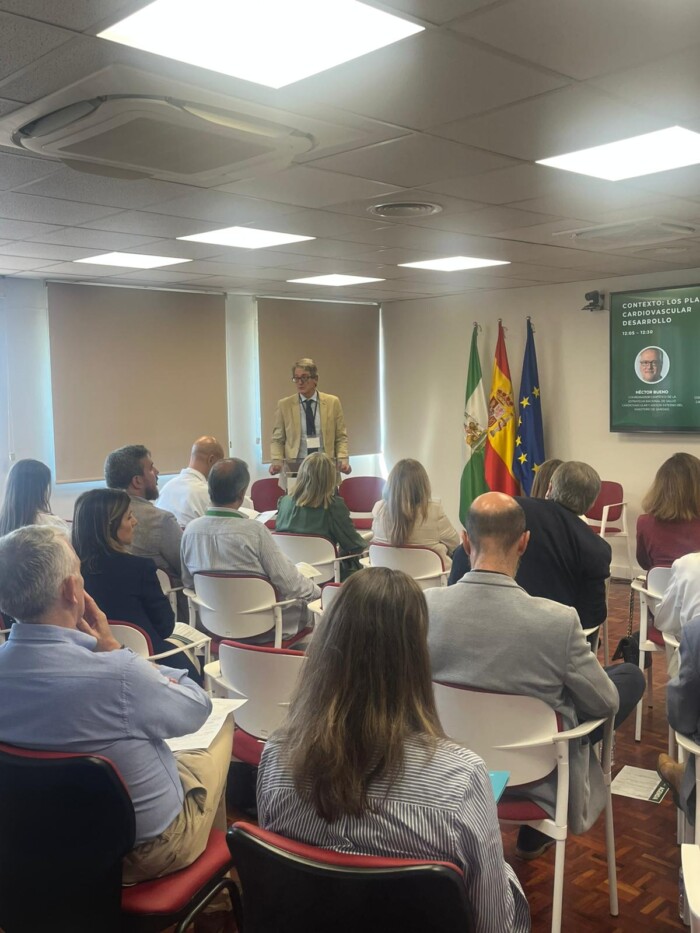Córdoba, September 2025 — The Institutional Launch of the DETECT-SHD Project marked a pivotal step in the fight against Structural Heart Disease (SHD) in Europe. Conceived in Andalusia, Spain, the pilot project seeks to detect valvular diseases earlier—before irreversible cardiac damage occurs—and to establish a replicable model for other regional and national health systems across Europe.
Hosted at the University Hospital Reina Sofía in Córdoba, the launch gathered high-level representatives from clinical, political, and institutional spheres, including the Andalusian Ministry of Health, the Spanish Ministry of Health, the European Parliament, and leading cardiology experts. Their participation underlined the growing recognition of early detection as a public-health priority and a cornerstone of sustainable cardiovascular care.
The event was widely covered by national and regional media, highlighting Andalusia’s leadership in preventive cardiology. Former Andalusian Health Minister Rocío Hernández Soto, who presided over the launch before stepping down the following week, stressed the project’s value in preventing premature deaths and improving quality of life for aging populations. The intervention of Elena Nevado del Campo (Spanish Ministry of Health) and Noelia Zurera (European Parliament) further underscored the strategic alignment between DETECT-SHD and the broader European Cardiovascular Health Plan currently under development.
A Transformative Pilot in Cardiovascular Prevention
DETECT-SHD integrates digital innovation, clinical training, and cross-sector coordination between primary care and cardiology. General practitioners and nurses are trained to identify cardiac murmurs using AI-enhanced digital stethoscopes and portable cardiac imaging devices, allowing early referral to cardiology through fast-track pathways. This approach not only shortens waiting times but also optimizes the use of healthcare resources.
Early data from the project suggest that systematic detection could reduce mortality from valvular disease by up to 20% and hospitalizations for heart failure by 50%, representing potential annual savings of €23–146 million for the Andalusian Health System. Beyond numbers, the project demonstrates how structural prevention can become an operational reality rather than an aspirational goal.
A European Benchmark for Replication
Embedded in Andalusia’s Comprehensive Cardiovascular Health Plan (PISCA) and aligned with Spain’s National Cardiovascular Strategy (ESCAV), DETECT-SHD is being positioned as a transferable best practice within the EU. Its inclusion in European discussions on the forthcoming EU Cardiovascular Health Plan reflects growing consensus that early detection of valvular disease must be an institutional responsibility, not an isolated initiative.
The launch event also marked a symbolic milestone: a political and scientific commitment to scale this model beyond Andalusia. By bridging clinical innovation, health policy, and European cooperation, DETECT-SHD shows how local action can drive continental transformation in cardiovascular prevention.
As one speaker concluded, “Listening to the heart of our population is not a metaphor—it’s a public health strategy.”

